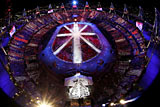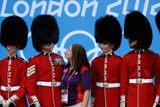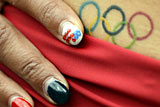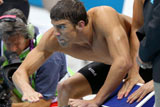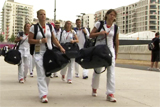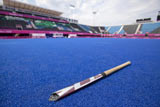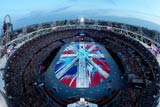Canoe Slalom
Updated: 2012-05-14 16:22:38
( london2012.com)
|
|||||||||||
The Canoe Slalom competition will call for speed, control and precision on the daunting white water rapids at the new Lee Valley White Water Center.
Modelled on slalom skiing, the first Canoe Slalom competition was held in Switzerland in 1932. The sport was staged on flat water during its early days, but was later switched to white-water rapids.
Since becoming a permanent part of the Olympic programme 20 years ago in Barcelona, the sport has thrilled spectators at the Games with spectacular, non-stop action on the powerful, unforgiving water.
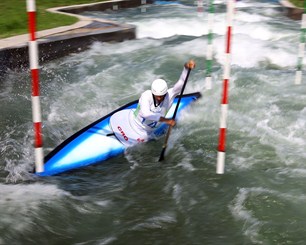 |
Competition dates
July 29 - Aug 2
Competition venue
Lee Valley White Water Centre, Hertfordshire
Number of medal events
Four - men's Canoe Single (C1), Canoe Double (C2) and Kayak Single (K1) and women's Kayak Single (K1).
Number of competitors
82 (61 men and 21 women). Each country is limited to one boat in each event.
Field of play
Athletes negotiate a 250 metre white water course, flowing at a rate of 13 cubic metres per second, and dropping 5.5m from start to finish.
History of Canoe Slalom at the Olympic Games
Canoe Slalom made its debut at the Munich 1972 Olympic Games, but didn't become a permanent part of the Olympic programme until Barcelona 1992.
The basics
Canoe Slalom competitions consist of timed runs down a white water course with up to 25 gates. Red gates must be negotiated upstream, while green gates must be negotiated downstream.
Touching a gate adds a two-second time penalty to the run; missing a gate results in a 50-second penalty. The time taken to run the course in seconds is added to any penalties to give the overall score.
Within Canoe Slalom there are events for both canoes and kayaks. In Canoe Single (C1, for one person) and Canoe Double (C2, for two people) events, competitors kneel and use single-bladed paddles; in the Kayak event (K1), competitors sit and use paddles with blades at both ends.
While the boats used in Canoe Sprint events are long and streamlined, Canoe Slalom boats are small, light and agile. The different shape has more stability and allows for greater manoeuvrability through the rapids.
Officials
Officials include a chief judge, timekeepers, start and finish judges, and equipment controllers, as well as gate judges, who determine whether or not an athlete has touched or missed a gate. The judges use coloured bats to signal penalties.
Keys to success
Canoe Slalom depends on great upper body strength, but also incredible control and precision. The best athletes will be able to successfully fight the strength of the water and accurately negotiate all the gates in the fastest possible time.
Breaking the rules
As well as time penalties, athletes can be penalised for other infringements, for example, for being judged not to have started or finished correctly.
Jargon buster
Eddy - a white water feature downstream from an obstacle.
Drop - a fall of water creating fast current and tough eddies.
Hole (stopper) - a whitewater reversal of flow.
PFD - a paddler's buoyancy aid; short for personal flotation device.
Spraydeck - a cover worn around the paddler's waist and stretched over the cockpit entrance to keep water out of the boat.
Upstream gate - a slalom gate with red poles that has to be negotiated against the water's flow.
Medal Count |
||||
| 1 | 46 | 29 | 29 | |
| 2 | 38 | 27 | 22 | |
| 3 | 29 | 17 | 19 | |
| 4 | 24 | 25 | 33 | |
| 5 | 13 | 8 | 7 | |
| 6 | 11 | 19 | 14 | |

